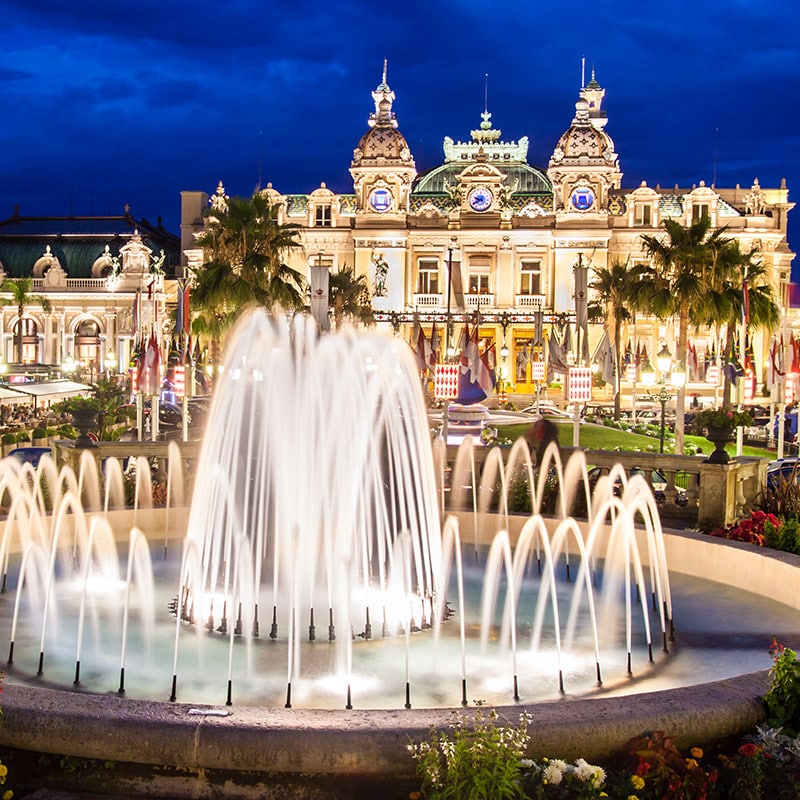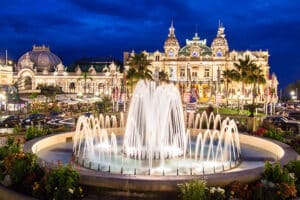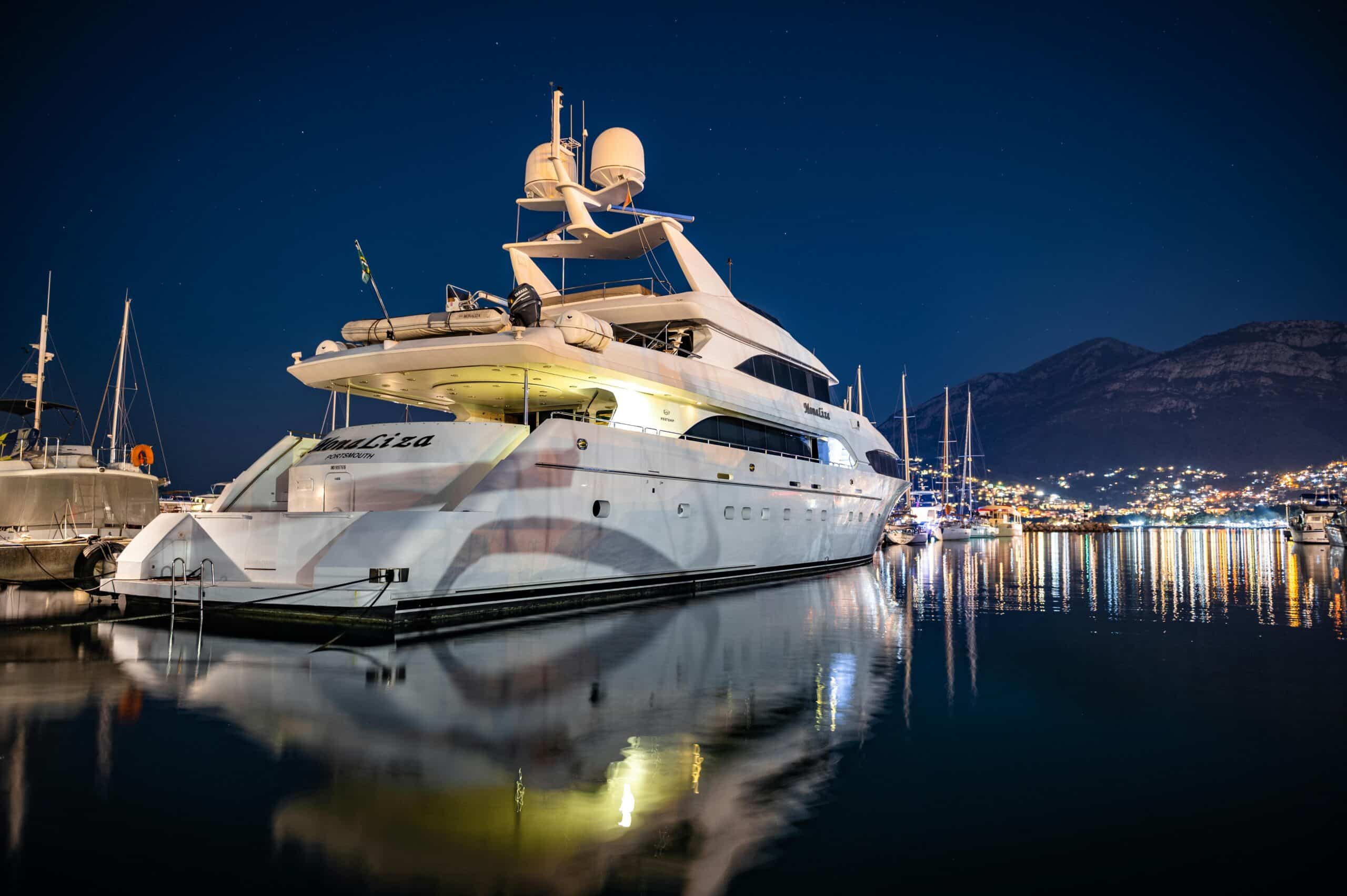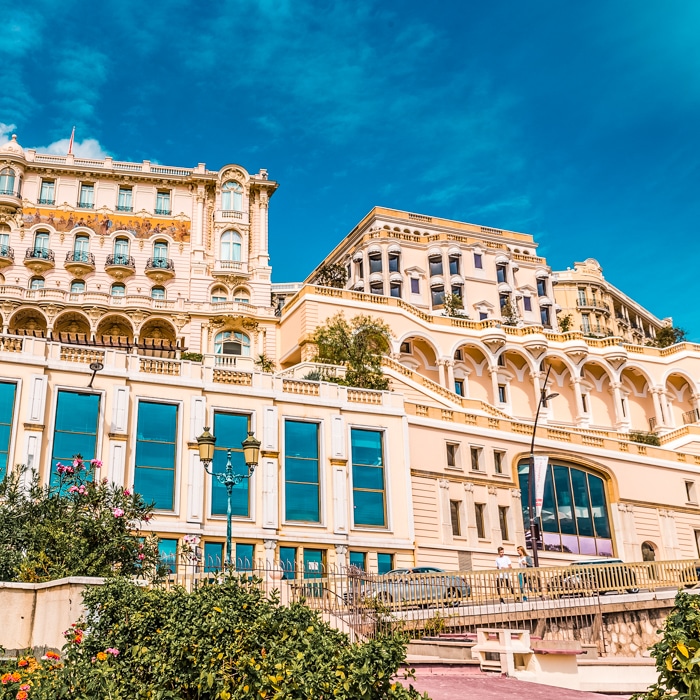Monaco, the world’s second-smallest country at just 2.02 square kilometers, has cultivated a global reputation far exceeding its diminutive size.
This Mediterranean microstate nestled along the French Riviera has become synonymous with glamour, wealth, and a distinctive blend of attractions that draw visitors from around the world.
From its legendary casino to its royal family, here’s what makes Monaco truly famous.
The Legendary Casino de Monte-Carlo
Perhaps no single attraction symbolizes Monaco’s glamorous reputation more than the Casino de Monte-Carlo. This Belle Époque masterpiece, completed in 1863, revolutionized Monaco’s fortunes and established its reputation as a playground for the wealthy.
The casino’s opulent gaming rooms have featured in numerous James Bond films, including “GoldenEye” and “Never Say Never Again.” According to the Société des Bains de Mer, which manages the casino, the venue’s architectural splendor draws as many non-gambling visitors as actual players.
Beyond its gaming tables, the casino complex houses the Opéra de Monte-Carlo, designed by Charles Garnier (of Paris Opera fame). This ornate performance venue hosts world-class opera and ballet productions in an intimate setting that amplifies Monaco’s cultural significance.

The Grimaldi Royal Family
Monaco’s ruling Grimaldi dynasty represents one of the world’s oldest monarchies, having governed the principality almost continuously since 1297. The family’s modern fame skyrocketed when Prince Rainier III married American actress Grace Kelly in 1956, bringing Hollywood glamour to the Mediterranean monarchy.
The Prince’s Palace stands as the official residence of Prince Albert II (Rainier and Grace’s son) and remains a popular attraction. The daily changing of the guard ceremony at 11:55 am draws substantial crowds, while the State Apartments (open April through October) provide glimpses into royal life.
Princess Grace’s legacy continues to shape Monaco’s image. The Princess Grace Rose Garden commemorates her love for these flowers with over 8,000 rose bushes representing 300 varieties. According to the Monaco Tourism Office, the garden ranks among the principality’s most-visited sites.
The Prestigious Monaco Grand Prix
The Monaco Grand Prix stands as Formula 1’s most iconic race, transforming Monaco’s winding streets into a high-speed circuit since 1929. This prestigious event, held each May, represents one-third of motorsport’s “Triple Crown” (alongside the Indianapolis 500 and 24 Hours of Le Mans).
What makes the Monaco Grand Prix particularly famous is its unparalleled setting. Unlike purpose-built tracks, Monaco’s circuit threads through actual city streets, including hairpin turns beside the harbor where multimillion-dollar yachts create a spectacular backdrop.
The Automobile Club of Monaco, which organizes the race, notes that setting up the circuit requires six weeks of preparation, transforming the principality into a motorsport spectacle that defines Monaco in the public imagination.
Port Hercules and Luxury Yachting
Monaco’s natural harbor, Port Hercules, has become synonymous with superyachts and maritime luxury. This deep-water port accommodates vessels up to 135 meters long, making it a premier Mediterranean mooring location for the world’s most spectacular private vessels.
The annual Monaco Yacht Show transforms the port each September, showcasing approximately 120 superyachts valued collectively at over €4 billion. According to Yacht Harbour Magazine, Monaco maintains the highest concentration of superyacht ownership per capita globally.
The port’s prominence reflects Monaco’s broader maritime heritage, celebrated at the Monaco Naval Museum, which houses Prince Rainier III’s personal collection of over 250 marine models and artifacts.
Tax Haven Status and Financial Prestige
Monaco’s reputation as a tax haven has contributed significantly to its fame. The principality charges no personal income tax for residents (with some exceptions for French citizens), making it attractive to high-net-worth individuals.
The Monaco Economic Board reports that this tax policy has helped create one of the world’s highest concentrations of millionaires and billionaires. Approximately one in three Monaco residents holds millionaire status, according to Knight Frank’s Wealth Report.
This financial environment has transformed Monaco’s real estate market into the world’s most expensive. The Chambre Immobilière Monégasque notes that average residential property exceeds €48,000 per square meter – more than four times Manhattan’s average prices.
The Oceanographic Museum and Jacques Cousteau’s Legacy
Perched dramatically on Monaco’s cliffside, the Oceanographic Museum represents a cornerstone of marine research and education. This impressive institution, opened in 1910, gained worldwide recognition under the 31-year directorship of legendary ocean explorer Jacques Cousteau.
The museum combines historical diving equipment, scientific exhibits, and aquariums housing over 6,000 specimens. According to the museum’s records, it attracts over 650,000 visitors annually, making it Monaco’s most-visited cultural institution.
Prince Albert I, who founded the museum, established Monaco’s early reputation for marine conservation – a legacy continued through the Prince Albert II Foundation, which supports global ocean protection initiatives.
Monte-Carlo and Luxury Shopping
The Monte-Carlo district epitomizes luxury retail and lifestyle. The famous Carré d’Or (Golden Square) houses flagship boutiques from the world’s most prestigious fashion houses, including Chanel, Louis Vuitton, and Hermès.
According to the Monte-Carlo Shopping Promenade, the district maintains one of Europe’s highest concentrations of luxury brands in a remarkably compact area. The Métropole Shopping Monte-Carlo adds to this reputation with 80 high-end boutiques in a Belle Époque setting.
This luxury shopping environment contributes to Monaco’s image as a destination where exceptional quality and exclusivity define the experience.
Famous Residents and Celebrity Culture
Monaco’s favorable tax policies and Mediterranean lifestyle have attracted numerous celebrities and athletes who have enhanced the principality’s fame. Tennis champion Novak Djokovic, Formula 1 drivers Lewis Hamilton and Max Verstappen, and pop star Bono are among noted residents.
The Monte-Carlo Rolex Masters tennis tournament provides an annual showcase for Monaco’s connection to athletic excellence, while events like the Monte-Carlo Television Festival attract entertainment industry luminaries.
According to Hello Monaco Magazine, over 30% of Monaco’s approximately 39,000 residents come from outside Monaco, creating an international atmosphere that reinforces the principality’s cosmopolitan reputation.
Architectural Innovation and Urban Density
Monaco’s extraordinary population density (the world’s highest at approximately 19,000 people per square kilometer) has inspired remarkable architectural solutions. The principality famously expands upward and outward, reclaiming land from the Mediterranean when necessary.
The Larvotto district exemplifies Monaco’s land reclamation projects, creating valuable real estate from the sea. The Fontvieille district, entirely built on reclaimed land, increased Monaco’s territory by approximately 20%.
According to the Monaco Department of Urban Development, the principality’s latest expansion project, Anse du Portier, will add 6 hectares to Monaco’s territory by 2025, featuring eco-conscious design and sustainable engineering.
Cuisine and Gastronomy
Monaco’s culinary scene contributes significantly to its fame, blending French, Italian, and Mediterranean influences into a distinctive gastronomic identity. The principality boasts exceptional restaurant density, with nearly 170 establishments in just 2 square kilometers.
Le Louis XV-Alain Ducasse at the Hôtel de Paris holds three Michelin stars, while restaurants like Yoshi (Joël Robuchon’s Japanese concept) and Blue Bay showcase diverse culinary excellence.
Monaco’s Champagne culture represents another famous aspect, with the principality consistently ranking among the world’s highest per-capita champagne consumers – approximately 4 bottles per resident annually, according to Wine & Spirits Magazine.
Ballet and Cultural Prestige
The Les Ballets de Monte-Carlo, established by Princess Caroline in 1985, has developed into one of Europe’s premier dance companies. Building on Monaco’s ballet tradition dating back to Diaghilev’s Ballets Russes residency in the early 20th century, the company tours internationally as a cultural ambassador.
According to the Monaco Government Tourist Authority, cultural investments represent a deliberate strategy to diversify Monaco’s reputation beyond gambling and finance. The Grimaldi Forum, Monaco’s primary performing arts and exhibition center, hosts internationally significant exhibitions and performances that enhance the principality’s cultural standing.
Conclusion: Monaco’s Multifaceted Fame
Monaco’s fame derives from its remarkable concentration of luxury, history, sporting heritage, and cultural significance within an exceptionally small territory. The principality has leveraged its compact nature into an advantage, creating a destination where visitors can experience extraordinary attractions within walking distance.
From the glamour of its casino to the prestige of its Grand Prix, Monaco has cultivated an identity that transcends its physical dimensions. As Prince Albert II noted during a CNN interview: “Monaco’s reputation comes from offering exceptional experiences that cannot be found elsewhere in such proximity and concentration.”
This Mediterranean microstate continues to evolve while maintaining the distinctive characteristics that have established its global fame – a remarkable achievement for the world’s second-smallest country.



![Top 10 Things To Do in Monaco in May [2025] 5 things to do in monaco in winter](https://yourmonaco.com/wp-content/uploads/2023/11/cityscape-of-monaco.jpg)
